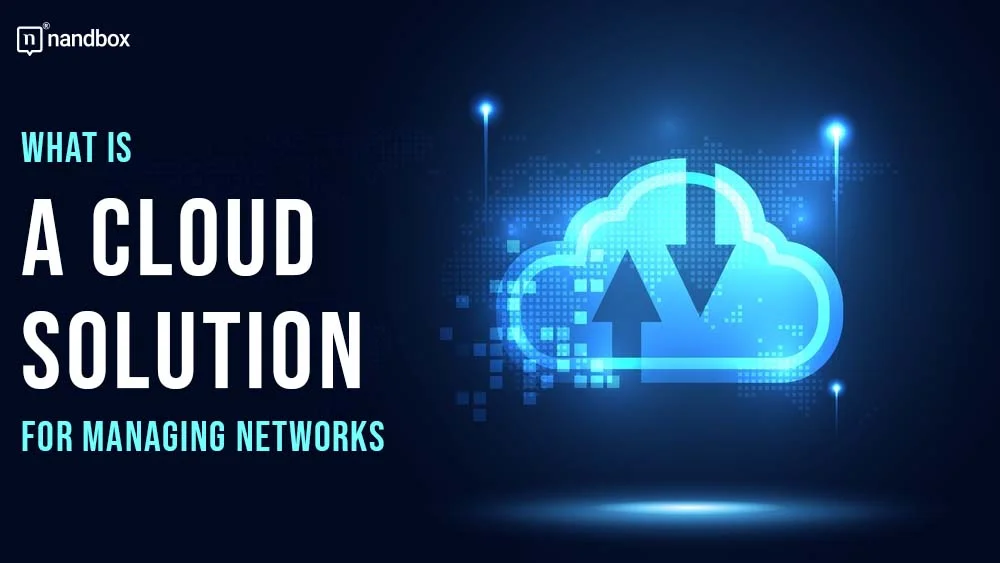Cloud solutions usually refer to resources accessible on-demand via the internet – the likes of Dropbox, AWS, Microsoft 365, Google Drive, you name it. However, in the context of managing networks, a cloud solution like the one provided by an exceptional Meraki partner takes a whole new meaning. It’s a platform – or better – a type of infrastructure that integrates multiple network devices, allowing them to be controlled from a single user-friendly dashboard via the internet. That means network admins can view, access, and manage these devices in one place, reducing inefficiencies and boosting productivity.
Cloud-Managed Network Vs. Traditional Network
When compared, cloud-managed networks have an edge over traditional, sometimes known as on-premise networks. Traditional networks rely heavily on physical hardware, which lacks flexibility and scalability. But for a more comprehensive comparison, check out this table:
| Feature |
Cloud-Managed Network |
Traditional/ On-Premise Network |
| Management | Offer centralized or unified management options for admins through a web-based application or single dashboard. | Network admins manage the hardware and software on-site. |
| Infrastructure | It’s in the name! Cloud-managed networks rely on infrastructure in the cloud. | Requires companies and businesses to make significant investments in physical hardware |
| Scalability | Cloud solutions for managed networks support the addition of multiple devices to the network without concern for performance issues (compromised end-user functionality or chokepoints) | This network faces significant limitations in terms of scalability. First, consider that local or physical network infrastructure requires regular, manual, and complex upgrades. Even worse? The scalability of these networks needs lots of funds, and as the network grows, maintenance and management can strain IT resources. |
| Accessibility | With cloud-managed network solutions, you can access and manage your network devices from anywhere, anytime – as long as you can access the internet. | On-premise means the IT teams must be on the ground to physically access the network or use a VPN for remote management. |
| Connectivity | Cloud-managed networks go hand in hand with connectivity. They provide admins remote access to the networks, ensuring they can respond quickly to issues and make the adjustments required. These networks also connect with ease to multiple cloud services and regions. | The physical limitations of traditional networks significantly affect their connectivity and flexibility. Not to forget, these networks depend on specific connectivity solutions provided by vendors. Plus, they’re prone to failure or might require routing, leading to latency issues. |
| Security | The provider usually applies security updates and patches to the cloud-managed networks automatically. Thus, protecting your network against the latest threats. This also simplifies managing security protocols or compliance measures. | Although on-premise networks give you full control over security measures, they require dedicated resources. Manual configuration of network devices can also lead to vulnerabilities, in particular, if the IT teams cannot apply updates across all hardware. |
4 Key Benefits of A Cloud Solution for Managing Networks
1. Real-Time Visibility
Cloud solutions for network management provide organizations with a real-time view of their entire network. Administrators can see how everything is performing, who’s using their network, and if there are some security issues.
This capability of cloud-managed networks can enhance your business in unimaginable ways. First off, through a single point/dashboard, you can spot a problem in the system before it causes downtime or slows the network. It’s not only about existing problems; the IT team, through real-time data, can identify potential issues early and address them to make the organization’s network more reliable.
Real-time visibility of cloud-managed networks also means you can get the most out of your network. Your network administrators can quickly conduct performance analysis to optimize traffic flow and identify bottlenecks. Furthermore, insights from real-time analysis can help them make better decisions about the network infrastructure.
2. Remote Troubleshooting

Real-time visibility here and remote troubleshooting might seem closely related, but they serve different purposes within cloud-managed networks.
As said above, real-time visibility offers a more comprehensive view of a business’s network performance, security, and even users’ activities within the network. This allows IT departments to catch and fix potential problems proactively.
However, remote troubleshooting is a game changer. Why, you may ask? It goes a step further, allowing network administrators to resolve issues across the network without physically being on the site. This ability to fix a problem in the network remotely reduces cases of downtime and enhances operation efficiency significantly.
3. Saves Money
From the comparison table between cloud-managed networks and traditional networks, the former appeared to offer financial efficiency.
Cloud-managed networks allow companies to save more money. These cloud solutions allow these organizations to shift their capital expenditure to operational expenditure. Hence, cloud-managed networks allow them to predict expenses clearly and get rid of upfront investments in hardware infrastructures.
Cloud solutions for network management offer the advantage of scalability. In terms of cost consideration, this scalability means you can add or remove devices to your organization’s network without investing in expensive hardware or hiring more IT staff.
The centralized nature of cloud-managed networks and their automation capabilities also help reduce labor costs, enhance operational costs further, and allow the IT team to focus on more strategic tasks. By focusing on ways to optimize cloud costs, organizations can achieve cost efficiency and flexibility in network operations.
4. Constant Upgrades
Sometimes, if not all times, what stands between an organization and a cyberattack is regular updates and maintenance of physical network infrastructure. Failure to update your network devices with the latest security updates and patches can leave a company or a business vulnerable to ransom attacks and other forms of cybersecurity threats.
Cloud-managed networks can help solve this problem. These cloud solutions are never stagnant. They constantly evolve with each software upgrade, patch update, and new feature introduced.
What’s more, everything is automated, so the organization will not suffer downtime or operation delays. It also reduces the risk of potential security breaches.
Closing Words
As we wrap up, it’s clear that a cloud solution for managing networks can be a big win for you and your IT department. It doesn’t matter how small or big your business is, cloud-managed networks promise real-time visibility, unparalleled scalability, significant cost-saving, and enhanced security. To top it off, everything can run remotely, so you can connect and monitor your network from anywhere at any time.





